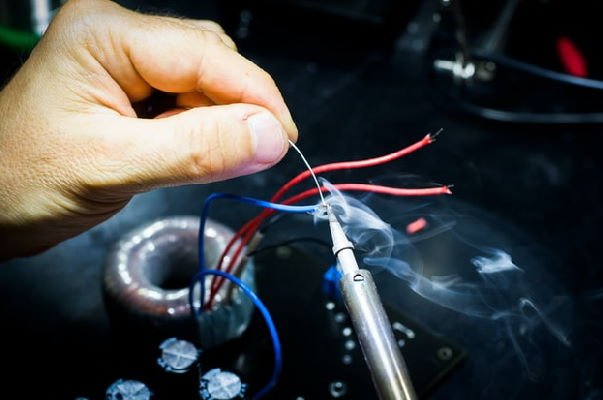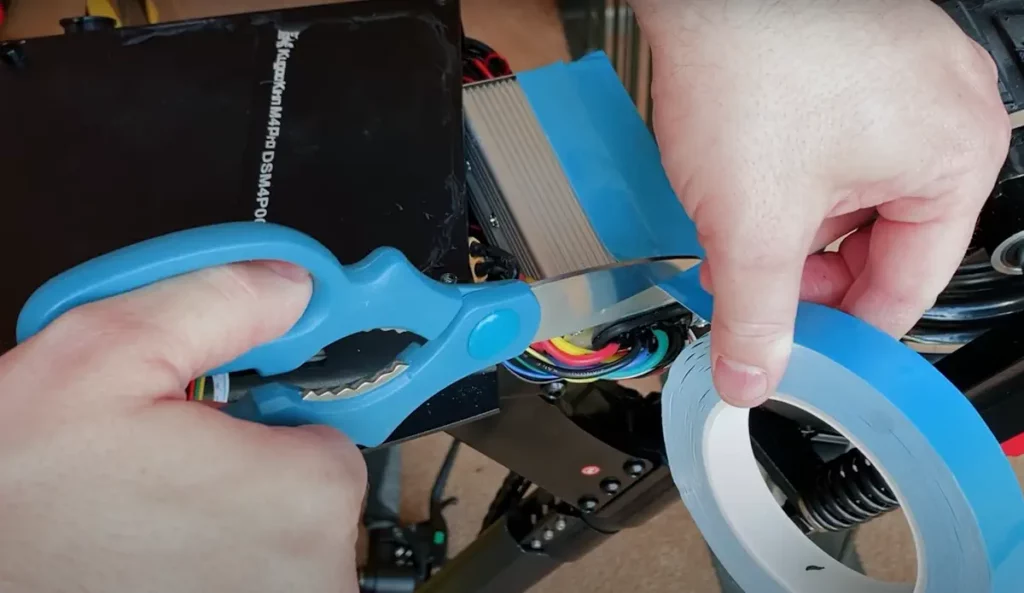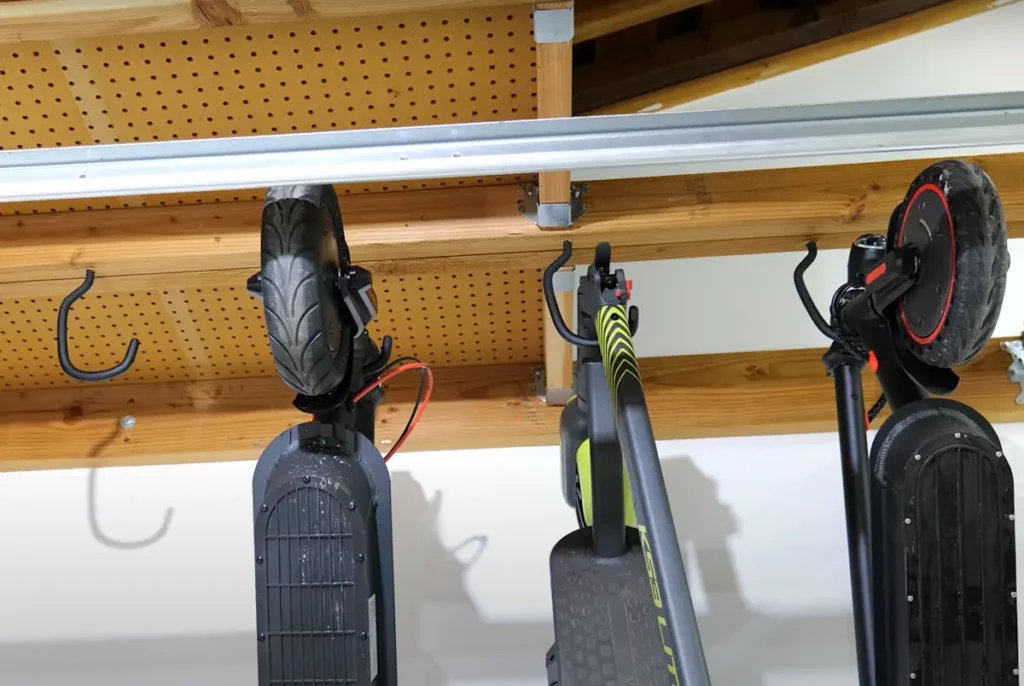It’s never fun when it happens, but it’s a fact of life – pneumatic-tire electric scooters get flat tires.
The risk of a flat tire will always be present, that’s why I’ve developed a checklist of a few simple steps that go a long way to prevent electric scooter flats.
Electric scooter flat tire prevention checklist
- maintain and clean your electric scooter regularly
- ride responsibly
- check tire pressure and make sure it’s inflated often, preferably before every ride
- use heavy-duty inner tubes
- fill tires with Green Slime or some other sealant
- use tire liners for inner-tube tires
- replace tires if they are old or worn out
- consider an electric scooter with solid tires

How to fix electric scooter flat tire?
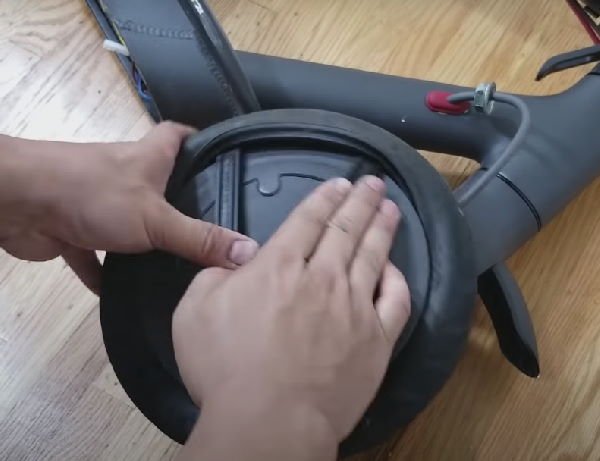
There are three main ways to fix a flat tire.
The basic method to fix a flat involves:
- deflating the tire
- removing the tire from the rim
- either repairing or replacing the tire
- reinstalling the tire on the rim
- inflating the tire
However, this can be challenging for some scooter models, which may require disassembling several parts around the wheel.
In such cases, consider the second method, fixing the tire without removing it.
The third method is taking your scooter to a mechanic.
Replacing (or repairing) the punctured tire – process for inner-tube tires
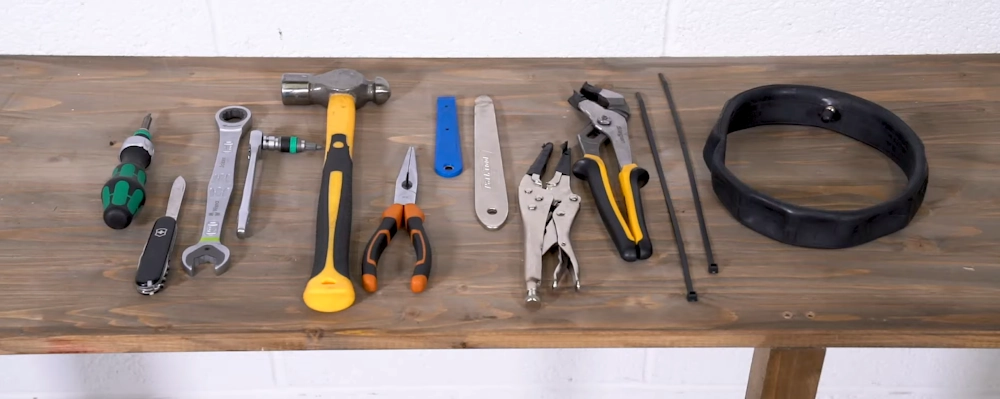
You will need the following tools:
- Allen key that arrived with your scooter, or a universal multitool with an Allen key (EKLIND on Amazon is very cheap and of great quality)
- wrench
- tire levers (this cheap tool is a lifesaver for fixing tires, you can find it on Amazon here)
- water and dish-washing soap
- repair-kit glue (unless using a new tube)
- tire patch (unless using a new tube)
- tire inflator (VacLife is great value, you can find it on Amazon)
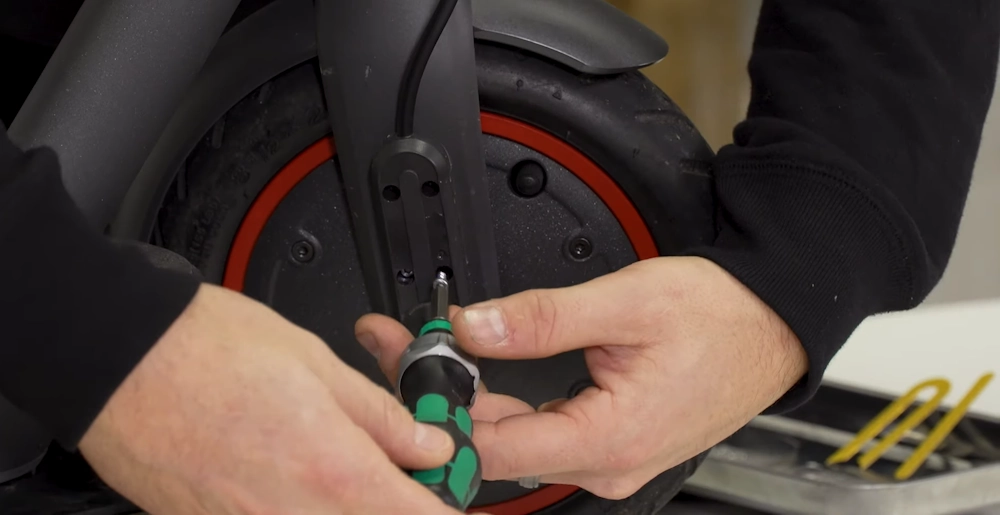
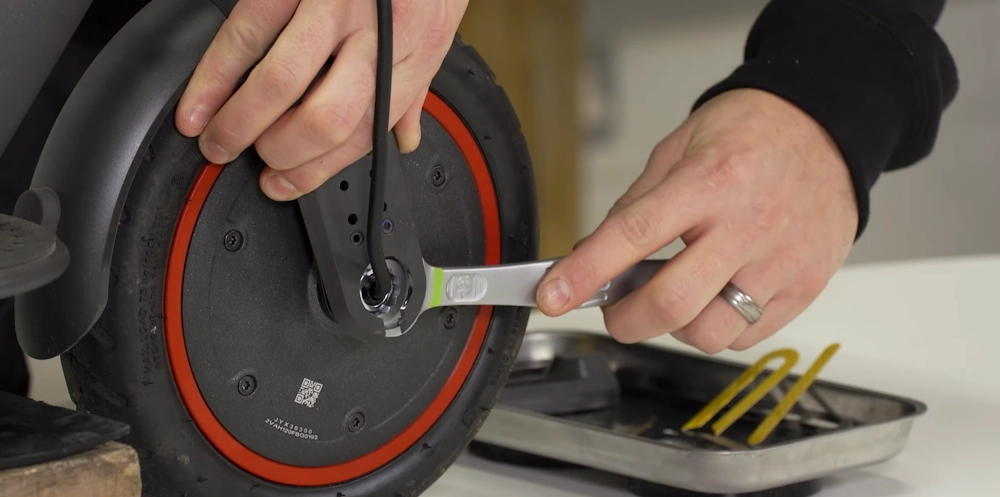
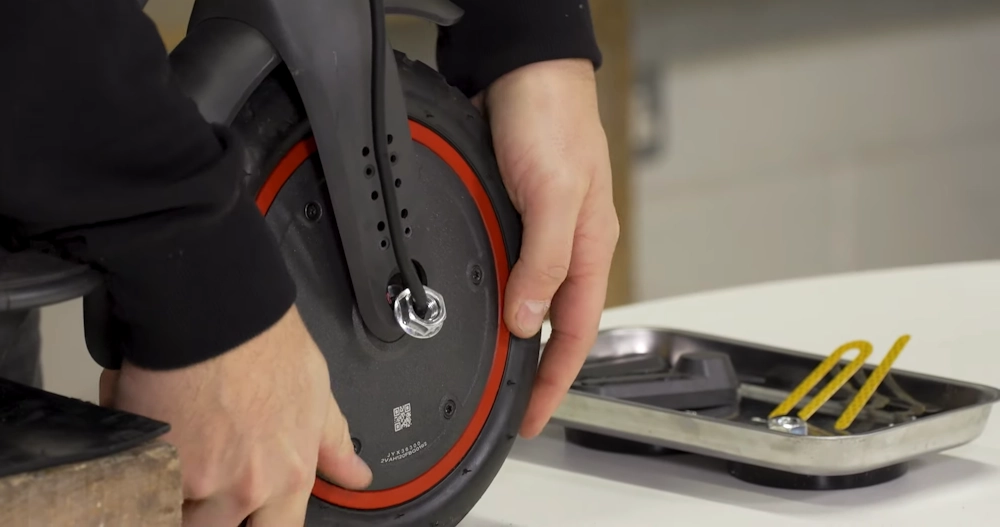
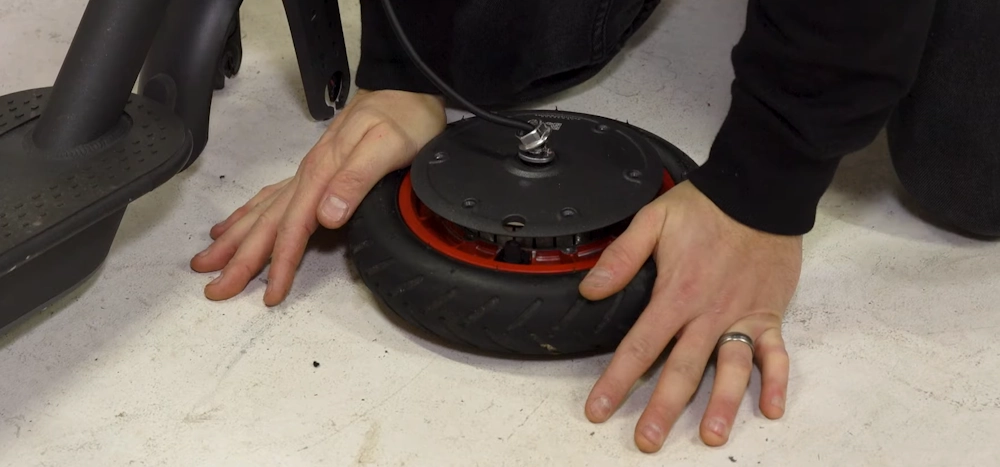
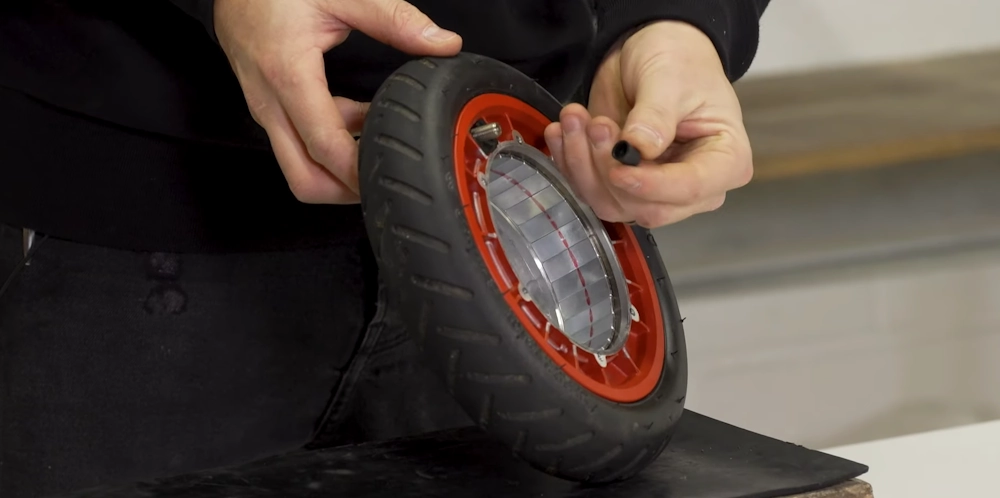
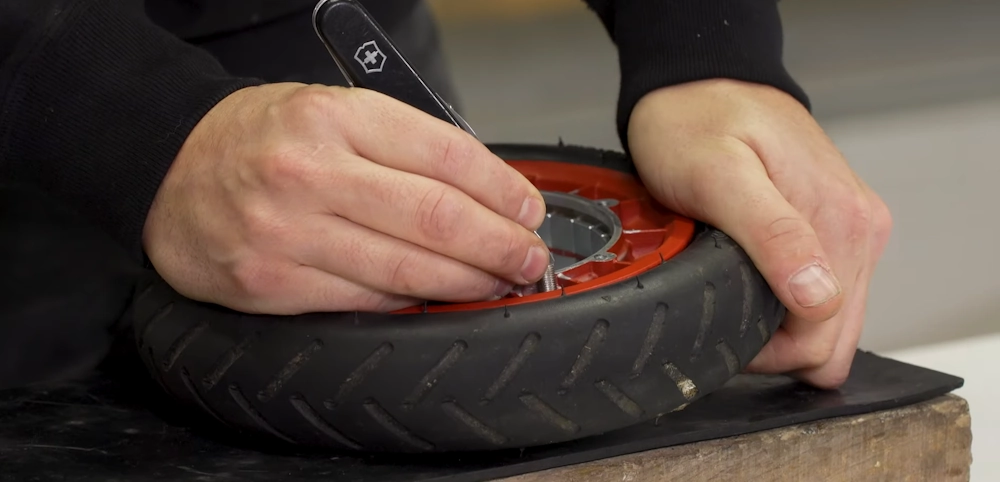
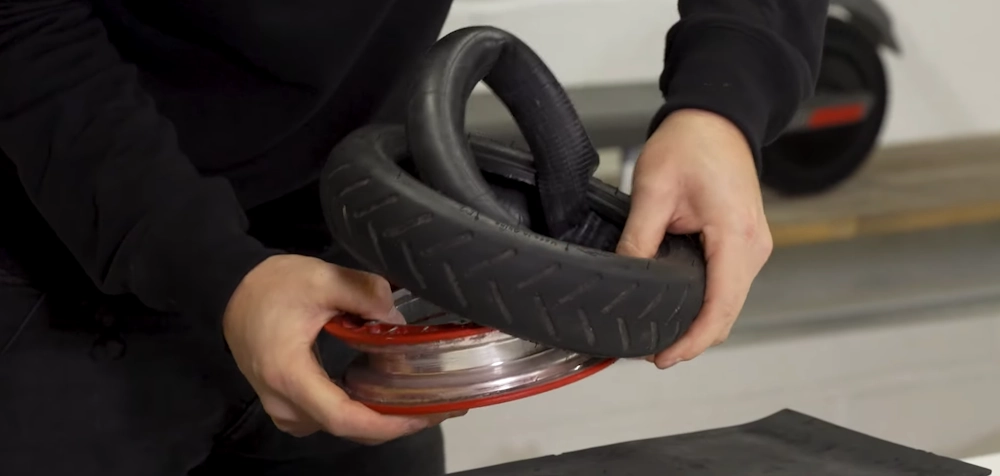
Before you start:
- store removed parts safely to avoid losing them;
- remember how everything looks and feels – take photos to reference during reassembly;
- note the wheel’s pattern direction;
- start by releasing all the air that may have remained in the tire. Unscrew the valve and press inside it with the Allen key to deflate it;
- use a wrench to loosen the nuts on both sides of the wheel;
- carefully detach the wheel from the fork, avoiding scratches;
- with tire levers, pull back half of the tire to expose half of the wheel, like concentric circles;
- use your fingers to locate and remove the inner tube from between the wheel and the tire;
- only then, fully separate the wheel from the tire.
Now, you have a choice to replace or repair the tube, depending on the extent of damage. Opt for a new tube if the holes are too large.
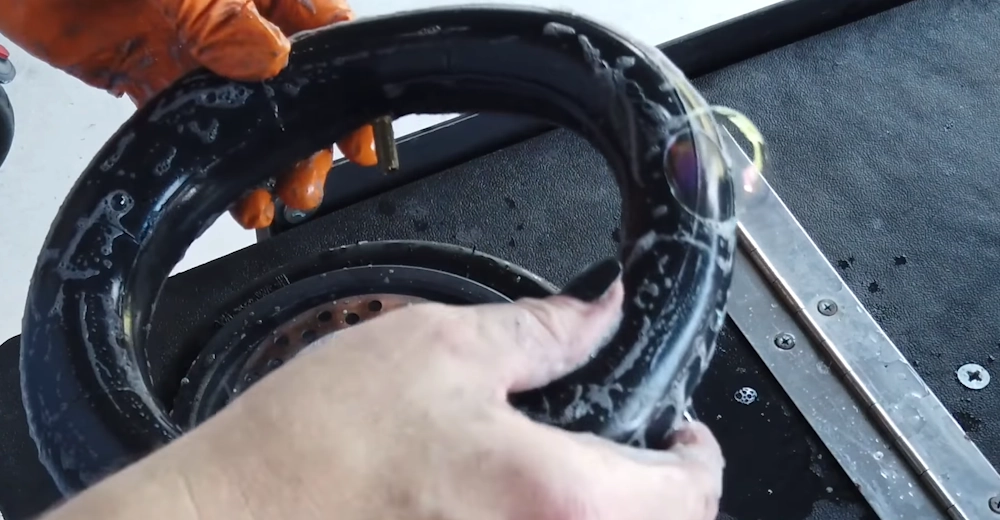
If you want to try and repair the tube itself:
- inflate it a little;
- place it in a bucket of water and soap, and see where it makes bubbles to find the holes;
- once you’ve located the holes, let the air out and let it dry out;
- sand and degrease the surface around the hole;
- apply a small amount of glue from a repair kit, smear it around with your finger;
- wait for a few minutes for the glue to dry out a bit, the exact time will be specified on the glue, if not, wait for 3 minutes;
- apply the tire patch, use strong pressure and make sure it fits the area around the hole perfectly;
- remove the plastic cover from the top of the patch.
- after getting the tube, clean the tire and wheel to avoid future punctures.
- keep the tire’s original direction with arrow patterns pointing down. Insert the tube, prioritizing the valve.
- use tire levers to reattach the tire securely.
- inflate the tire, check for leaks, and adjust the pressure per your scooter’s manual if your inflator has a gauge.
- reassemble all parts, ensuring the wheel spins freely.
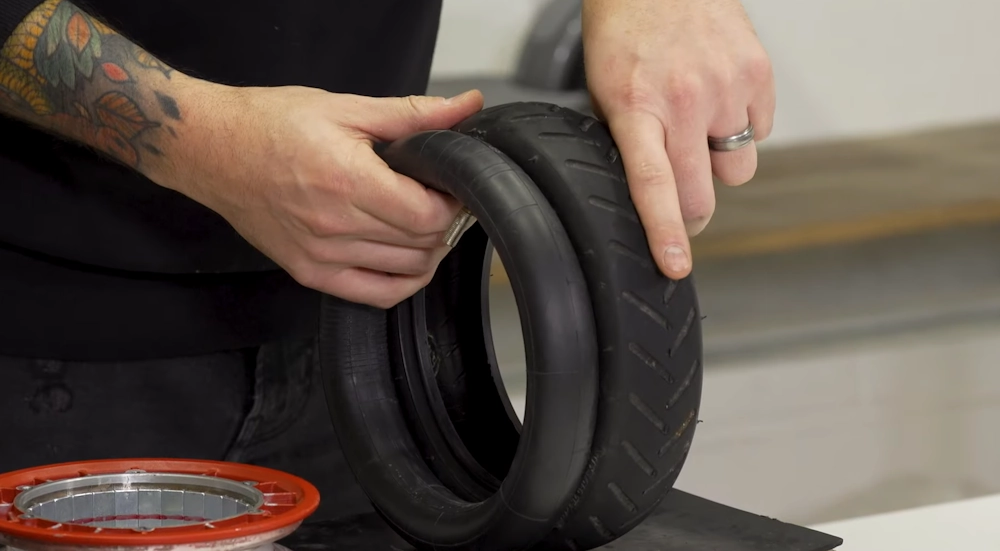
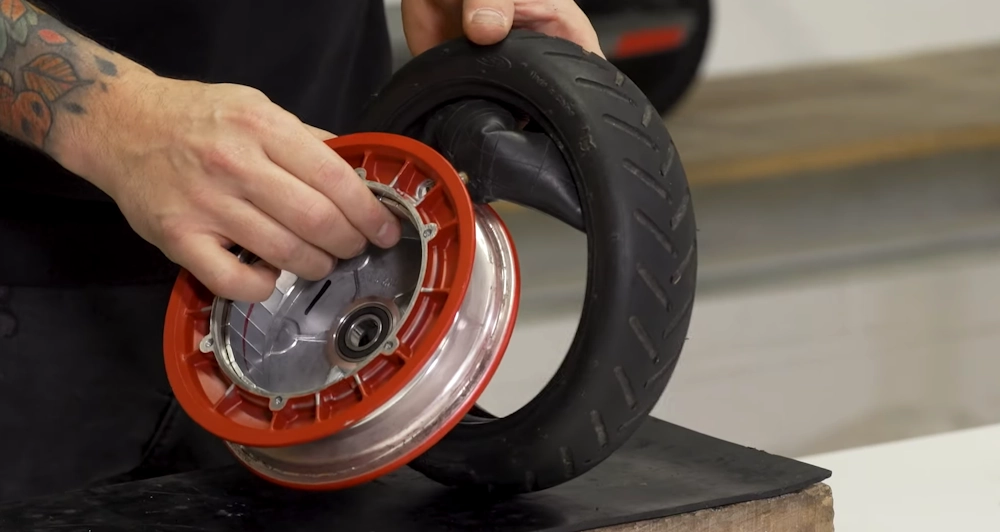
Congratulations! Your flat tire is fixed. Watch a video for visual guidance on installing a new tube for the Xiaomi M365.
This is another great video, this time showing how to install the tire but also repair the tube itself, also on a Xiaomi M365.
Fixing the flat tire without removing it (using Green Slime)
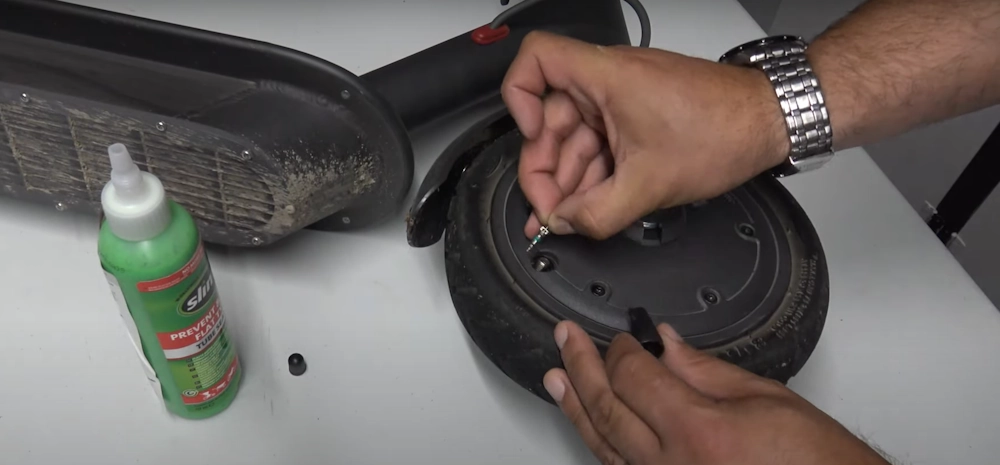
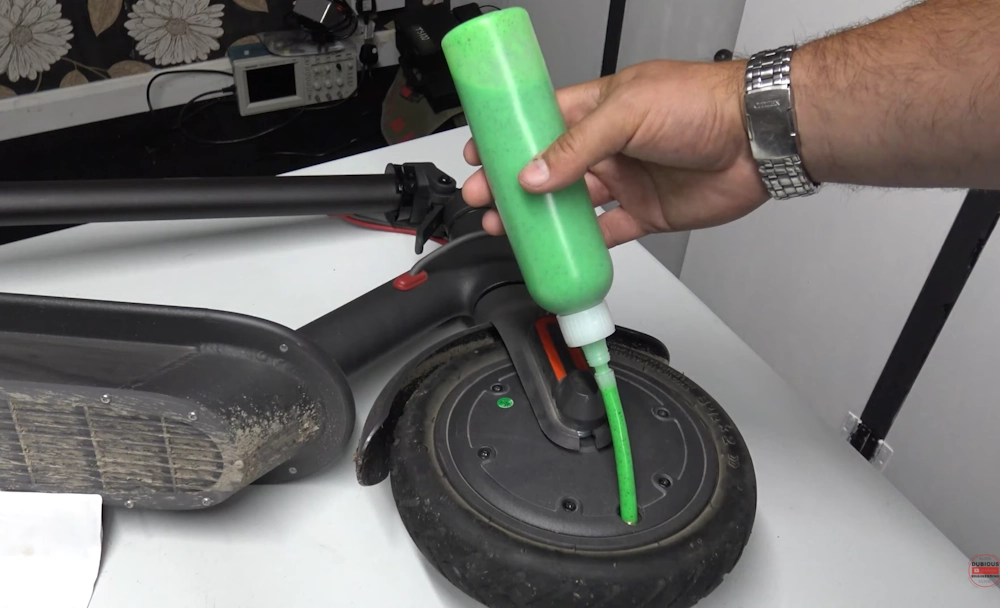

Some scooters require extensive disassembly to access the wheel. For a quick and cost-effective fix for minor punctures, consider this method.
Note that it’s effective for small punctures but not for significant damage or blowouts.
You’ll need:
- a tube of Green Slime;
- tire inflator.
With this method, you just:
- deflate the tire and remove debris;
- position the valve in the upper half of the tire for the slime to flow down;
- use the tool in the Green Slime bottle cap to remove the valve core;
- inject around 1.8 oz / 100 ml of Green Slime into the tire to seal the hole;
- reinflate the tire, checking for leaks;
- briefly rotate the wheel to evenly distribute the slime.
The best thing about Green Slime is that not only you can use it to fix flats, but you can also use it before a flat happens to prevent flats!
You can find Green Slime on Amazon here, the 32-ounce bottle is much better value than the 8-ounce one.
Here’s a great video of a tire repair with Green Slime.
How to prevent flat tires?
Even though fixing a flat can be easy (and even fun if you enjoy tinkering with your scooter), it’s still a headache.
To avoid flats as much as possible, you need to follow a healthy maintenance routine, but also apply a few extra tricks.
Basic tips to prevent flat tires
Regularly check your tires for damage and clean any debris around the wheels.
Before each ride, give your tire a kick for a quick check. I recommend measuring the tire pressure and ensuring it’s properly inflated at least once a week.
Surprisingly, sharp objects are not the most common cause of flats. More often, riders face risks when riding too fast and colliding with obstacles.
To extend your tire’s life, avoid riding in wet conditions – debris sticks to wheels more easily when it’s wet, and water can introduce smaller particles between the tire and tube.
Also, use your entire body when riding – slow down and bend your knees when encountering bumps, and avoid jumping, even on low sidewalks.
Advanced tips to prevent flat tires
Before we dive into advanced tips, keep this in mind – if your tires aren’t causing problems, there’s no need to tinker with them. These methods involve tire adjustments.
However, if you’ve had a flat before, they are easy to apply.
When replacing inner tubes, consider heavy-duty, thorn-resistant ones. They may cost a bit more but offer extended durability, especially in debris-prone cities.
You can also explore anti-puncture tape or tire liners to bolster your inner tube’s flat resistance. This involves inserting rubbery tape between the tube and the tire; deflate the tire before installation.
You can find the best anti-puncture tape, Mr. Tuffy on Amazon.
Here’s a great video demonstrating the process on bike tires.
Finally, you can replace the tire, tube, or both if they are worn out. It’s the costliest and most intricate action to avoid flats.
I’d suggest this only if your tires have been in use for at least 5 years and show noticeable wear and tear.
Why flats occur?
There are several reasons why a flat tire can happen to your scooter:
- Debris – sharp objects like glass, nails, or wood can puncture the inner tube.
- Impact – riding fast and hitting a sidewalk or rough terrain can cause flats.
- Excessive Pressure – older, worn-out tires subjected to abuse or under-inflation are prone to flats.
- Tire Pressure – ensure correct tire pressure; both over-inflation and under-inflation can lead to flats.
- Neglect – infrequent tire inspections and maintenance contribute to flat tire issues.
- Installation – proper tire installation is essential; ensure it’s correctly done when replacing a tire.
How common are flats in electric scooters?
Flat tires in electric scooters with air-filled tires are still pretty common, and are one of the most frequent scooter defect types. This is especially true for inner-tube tires. With any popular scooter, on average, you may get one flat every six months.
Further, there are two different types of air-filled tires :
- inner-tube
- tubeless
Scooters with inner-tube tires have a higher risk of flats, and inner-tube tires are generally more common than tubeless ones.
In contrast, scooters with larger, patterned tires or those designed for off-road use experience fewer flats. These models are constructed to withstand rough terrains, reducing the likelihood of getting a flat from small street debris.
Solid tire models rarely encounter flats. However, solid tire scooters come with various tradeoffs, and their suitability depends on specific factors.
Should you consider solid instead of pneumatic tires?
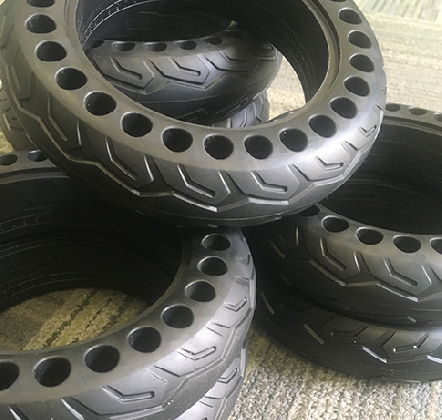
If you’re constantly getting flats, even after you’ve tried some methods to reinforce your air-filled tires, then you should seriously consider getting a scooter with solid tires.
However, solid tires come with several drawbacks. They often result in rough and uncomfortable rides, reduced traction, limited adjustment options, and occasionally, inferior overall performance.
Moreover, solid tires have a limited lifespan and can wear out even faster than pneumatic ones.
As a general guideline, if you’ve had more than three flats in a year, think about getting a solid-tire scooter or switching to solid tires
To learn more about the different types of tires, and how they compare to each other, check out our full solid vs pneumatic tire guide.


